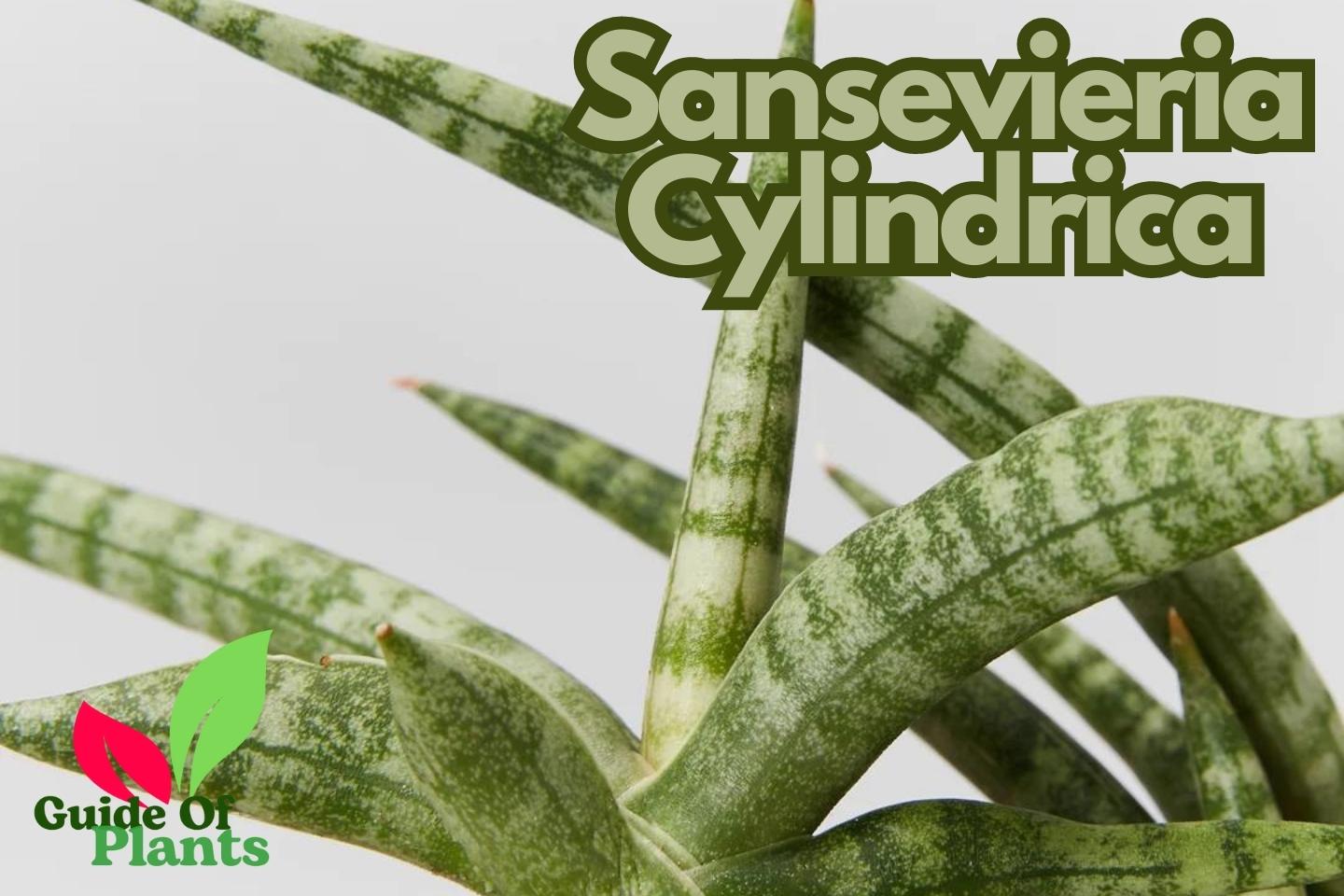Sansevieria Cylindrica, also known as the cylindrical snake plant or African spear plant, is a popular and hardy succulent houseplant. This upright, cylindrical-leaved plant is native to the tropical regions of Africa and is loved for its unique appearance and resilience. In this comprehensive guide, we will discuss everything you need to know about growing and caring for Sansevieria Cylindrica in your home. Let’s start with Guide of Plants.
Table of Contents
Also Know About:
- 5 Tall Low Light Indoor Plants For Your Indoor Space
- White Phalaenopsis Orchid
- Shenzhen Nongke Orchid
What is Sansevieria Cylindrica?
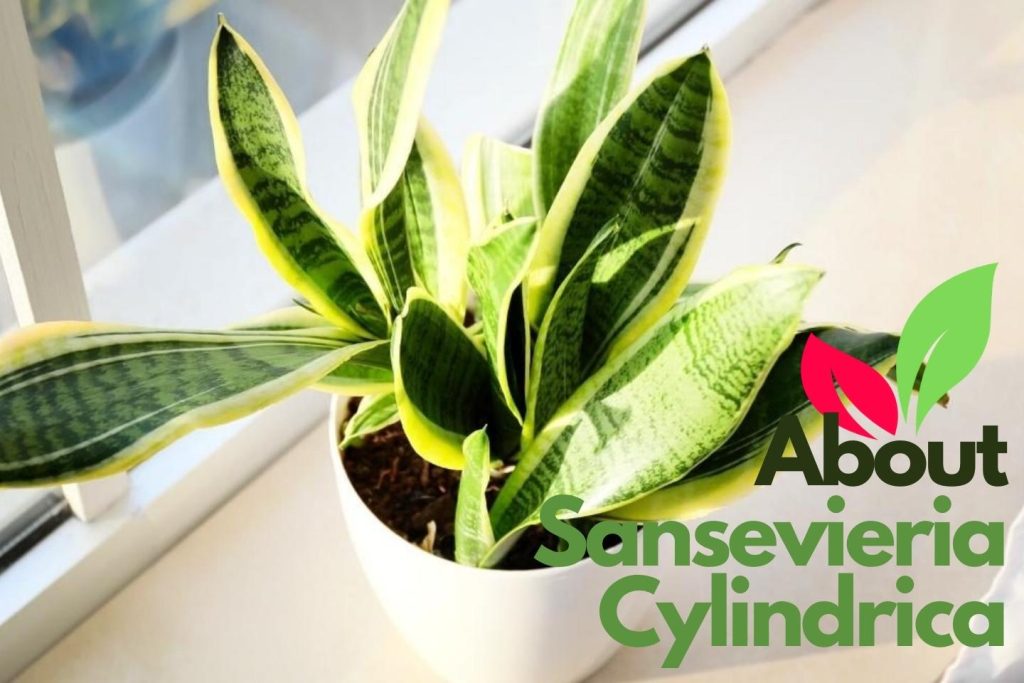
It is a hardy succulent plant that belongs to the Agavaceae family. It is botanically identified as Sansevieria Cylindrica and has the common names – Cylindrical Snake Pant, African Spear Plant, Cylindrical Mother-in-Law’s Tongue.
This houseplant is treasured for its distinctive tall, round, spear-shaped leaves that inspired its common monikers. This plant has a tropical heritage but can thrive as a low-maintenance houseplant if basic care guidelines are followed.
Sansevieria Cylindrica has stiff, upright leaves that emerge from the soil in a circular, cylindrical shape. The foliage has a rounded tip and tapers slightly at the base where it attaches to the rhizomatous stems. Mature snake plants can grow 2-3 feet tall and 1-2 feet wide but have a slow growth rate.
Scientific Background of Cylindrical Snake Pant
The Sansevieria genus was named in honor of Raimondo Di Sangro, an 18th century Italian prince with the title Prince of Sansevieria. The ‘Cylindrica’ species name refers to the plant’s trademark cylindrical leaves. The plant was formally described by German born botanist Karl Heinrich Emil Koch in the year 1853. It belongs to the family Asparagaceae, subfamily Nolinoideae.

Benefits of Sansevieria Cylindrica
The cylindrical snake plant, also known as Sansevieria cylindrica, is a popular houseplant that offers a number of benefits. These include:
- Unusual, cylindrically-shaped leaves that add drama and interest to any room
- The ability to tolerate low light and infrequent watering once established, making it a low-maintenance plant
- The ability to purify indoor air by removing toxins like formaldehyde
- Extreme hardiness and resilience, making it suitable for beginner gardeners
- Slow but steady growth, making it perfect for small spaces
- Pet-friendliness and non-toxicity, making it safe to have around children and animals
If you are looking for a beautiful, low-maintenance, and beneficial houseplant, the cylindrical snake plant is a great option.
Kinds of Sansevieria Cylindrica
There are several different kinds of Sansevieria available. Each with its own unique characteristics:
- Sansevieria Cylindrica ‘Boncel’ has dark green banded foliage.
- Sansevieria Cylindrica ‘Gabon’ is tolerant of lower light conditions.
- Sansevieria Cylindrica ‘Skyline’ has tall blue-green leaves.
- Sansevieria Cylindrica ‘Cleopatra’ is a yellow variegated cultivar.
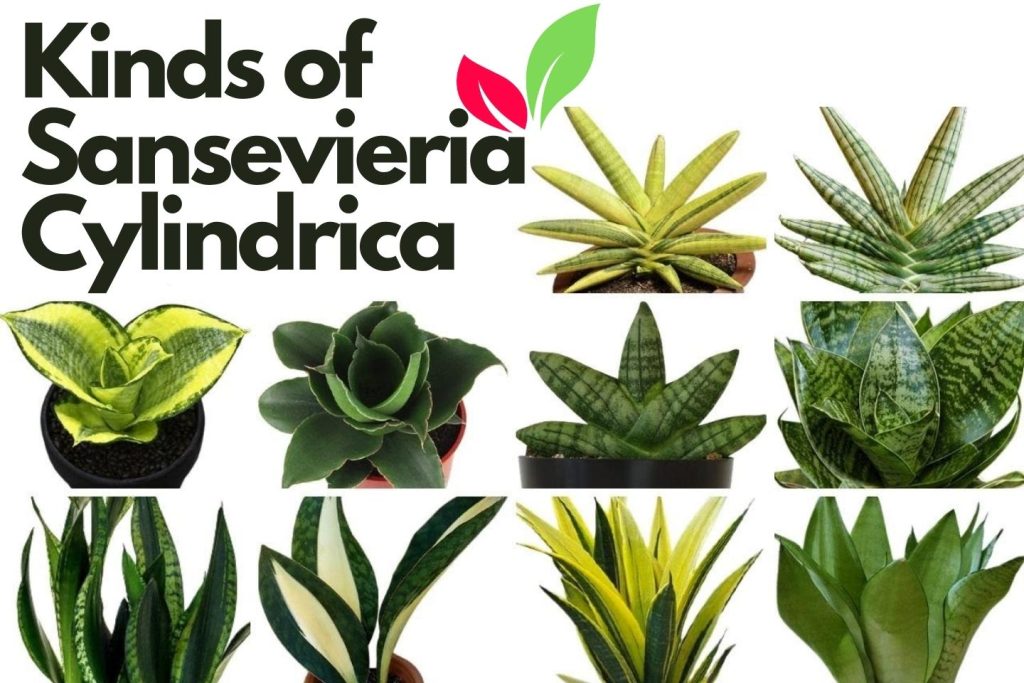
Unique Cylindrical Foliage
The most striking feature of the cylindrical snake plant is its tall, rigid leaves that are shaped like upright, rounded cylinders. This gives the foliage and overall plant a very structured, vertical appearance.
Color Variations of Sansevieria Cylindrica
The spear-shaped leaves have a deep green color with faint light green horizontal barring when mature. But younger leaves may have darker brownish-green bands. There are also cultivars with variegated white stripes.
Growth Habits
Sansevieria Cylindrica has a vertically upright but compact growth habit. The succulent leaves emerge from underground rhizomes and grow in a rosette pattern. New leaves arise in a circular formation from the center. Plants grow slowly to a modest height and spread.
Natural Origins and Regions of Sansevieria Cylindrica
The cylindrical snake plant is native to the tropical regions of Africa. It is found in various countries across Central Africa, including Angola and Nigeria. The plant thrives in steamy jungles and as an understory plant sheltered by the rainforest canopy. It prefers warm, humid environments and areas with well-draining, porous soil that allows excess moisture to percolate through.

Native to Tropical Africa
Sansevieria Cylindrica hails from the tropical regions of Africa. It is native to various countries across Central Africa including Angola and Nigeria where it thrives in steamy jungles and as an understory plant sheltered by the rainforest canopy.
Found in Angola and Nigeria
Within its native African range, the cylindrical snake plant grows in Angola and Nigeria. Here it flourishes in warm, humid environments and areas with well-draining, porous soil that allows excess moisture to percolate through.
Ideal Growing Conditions
The cylindrical snake plant is quite adaptable and able to tolerate less than ideal conditions which makes it a great low maintenance houseplant. But it thrives best in the following settings:
Light Requirements
This plant grows best with indirect sunlight or partial shade. It can adapt to low light areas but may grow slower. Direct hot sun will scorch the leaves.
Watering Sansevieria Cylindrica
It prefers slightly dry soil and is susceptible to rot if overwatered. It possesses water-storing tissues that allow it to tolerate extended periods without water. The following tips will help you water your plant properly:
- Allow the top 1-2 inches of soil to dry out between thorough watering. Use your finger to test the moisture levels.
- During the warmer months of spring through fall, water your plant every 10-14 days. Reduce watering frequency in winter.
- When you do water, pour enough so that water drains from the drainage holes to flush out salts.
- If the leaves start to wrinkle or bend downward, it is a sign that the plant is thirsty and needs water.
- Take care not to get water on the fleshy foliage, as wet leaves can lead to fungal issues. Only pour water into the soil.
- Overwatering and soggy soil are the most common causes of root rot. Allow excess moisture to drain away fully.
- Container plants may need more frequent watering than in-ground plants. Adjust watering as needed for your environment.
- Sansevieria prefers evenly moist soil but tolerates short dry spells better than sitting in wet soil.
By learning your specific plant’s watering needs and your indoor conditions, you can maintain the ideal soil moisture for healthy roots and lush leaves. With experience, finding that perfect balance between dry and saturated will become second nature.
Soil Type Preferences
Sansevieria prefers a quick-draining, porous potting mix amended with sand, gravel, or perlite. It does not tolerate soggy soil.
Humidity and Temperature Needs
Cylindrica thrives in average home humidity and temperatures between 65-80°F. It should be kept away from cold drafts.
How to Plant Sansevieria Cylindrica
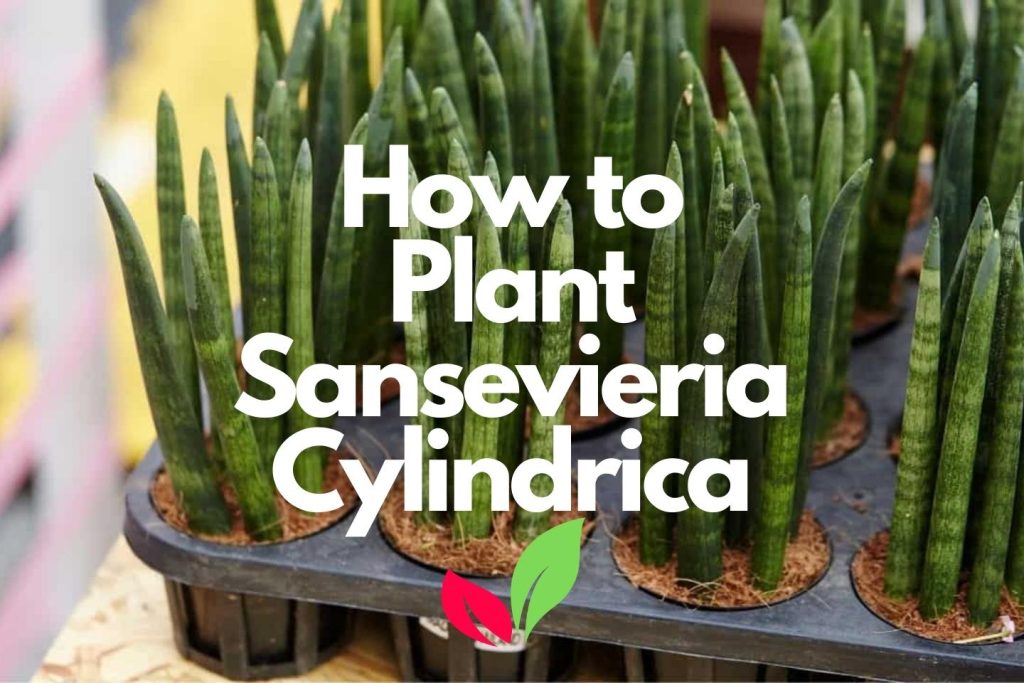
To plant Sansevieria Cylindrica properly, follow these tips:
- Choose a container with drainage holes and that is slightly wider than the root ball. Terra cotta, ceramic, and plastic pots all work well.
- Use a well-draining cactus/succulent potting soil amended with 1/3 perlite or pumice.
- Carefully remove the plant from its nursery pot, loosen the roots, and place it in the new container. Fill with soil to cover the roots.
- Allow at least 12-24 inches between plants to accommodate growth. Place in front of brightly lit windows.
Interesting Facts About This Plants
Here are some intriguing highlights about this unique houseplant:
- This plant has unusual cylindrical foliage that is quite different than most other houseplants with trailing or rounded leaves.
- In Feng Shui and other practices, Sansevieria Cylindrica is valued for removing toxins like benzene and formaldehyde.
- This plant is almost indestructible and survives low light and irregular watering, making it great for new plant parents.
- It grows slowly but can thrive for many years with minimal care and repotting.
- Snake plants are non-poisonous for dogs, cats, and children, making them safe houseplants.
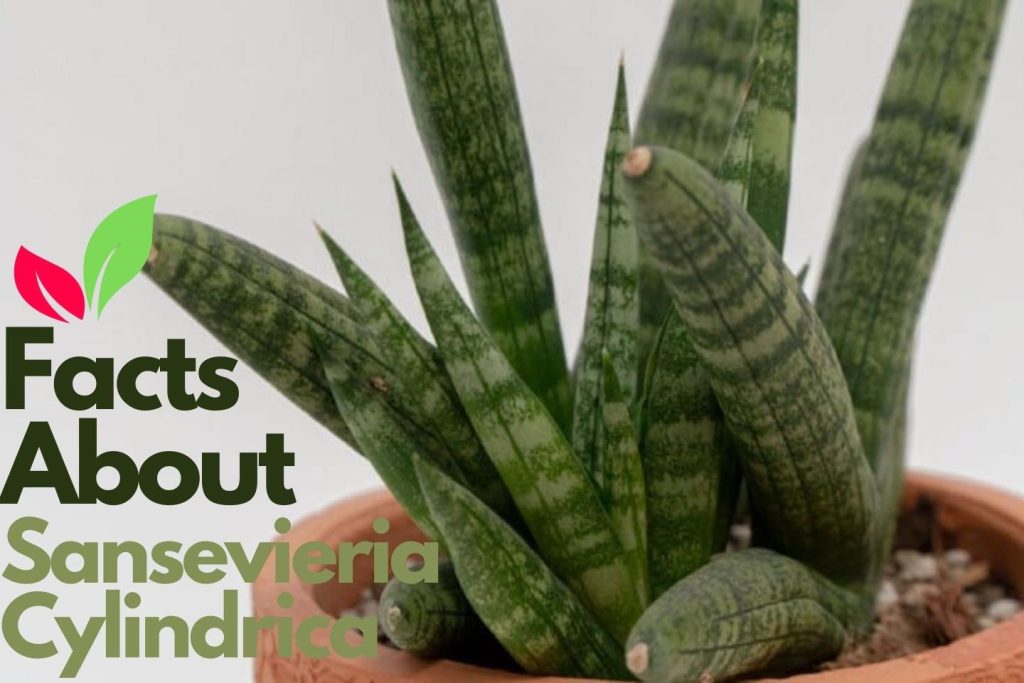
Caring for Sansevieria Cylindrica
Sansevieria Cylindrica is quite resilient, but you can provide the best care with these tips:
- Place the plant in a spot with ample ambient daylight but protect it from hot midday sun rays.
- Water thoroughly only when the top few inches of soil are dry. Take care not to overwater.
- Use a balanced liquid fertilizer at half strength during spring and summer months.
- Remove healthy leaves and root them in soil or water to easily propagate new snake plants.
- Repot every 2-3 years in spring, moving to a slightly larger container.
- Watch for mealybugs and scale insects, and avoid overwatering to manage pests and diseases.
Decorating and Design
The unique texture and height of cylindrical snake plants lend themselves to decorating in these ways:
- It looks fabulous in modern, contemporary, minimalist, and tropical inspired spaces.
- Use it as striking floor plants or on pedestals.
- Cluster in a row or corner.
- Combine with trailing pothos, philodendron, tropical palms, or fiddle leaf fig trees.
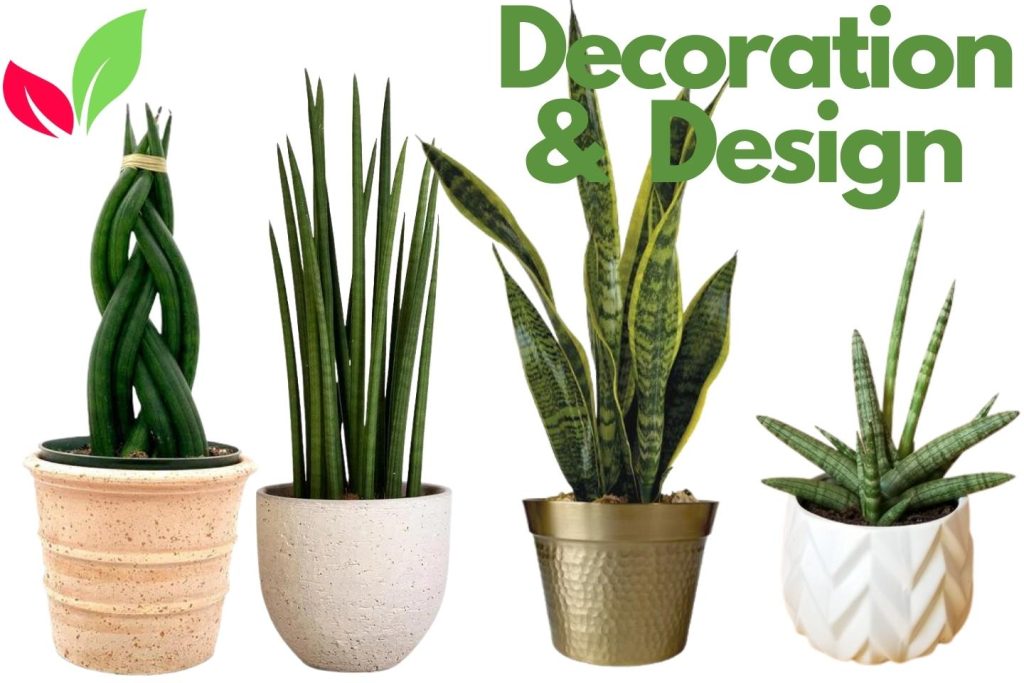
Know About: Sakura The Japanese Cherry Blossom Plant
FAQ’s
Why Are My Plant’s Leaves Bending?
This can be caused by too little sunlight or overwatering. Move to a brighter spot and reduce watering frequency.
How to Revive a Neglected Plant?
Trim away dead leaves and any rotting roots. Repot in fresh soil and water when dry. Place in bright location.
Should I Mist My Snake Plant?
Misting is not needed for snake plants. Keep leaves dry to avoid fungal disease and only water soil when dry.
Conclusion
With its striking cylindrical foliage, supreme resilience and tropical appeal, the Sansevieria Cylindrica is a fantastic choice to add height, structure and intrigue to your indoor plant collection. Following the growing tips outlined will keep your African spear plant thriving for years to come. The cylindrical snake plant’s adaptability and unique look make it a top pick for modern plant lovers and busy folks alike.

